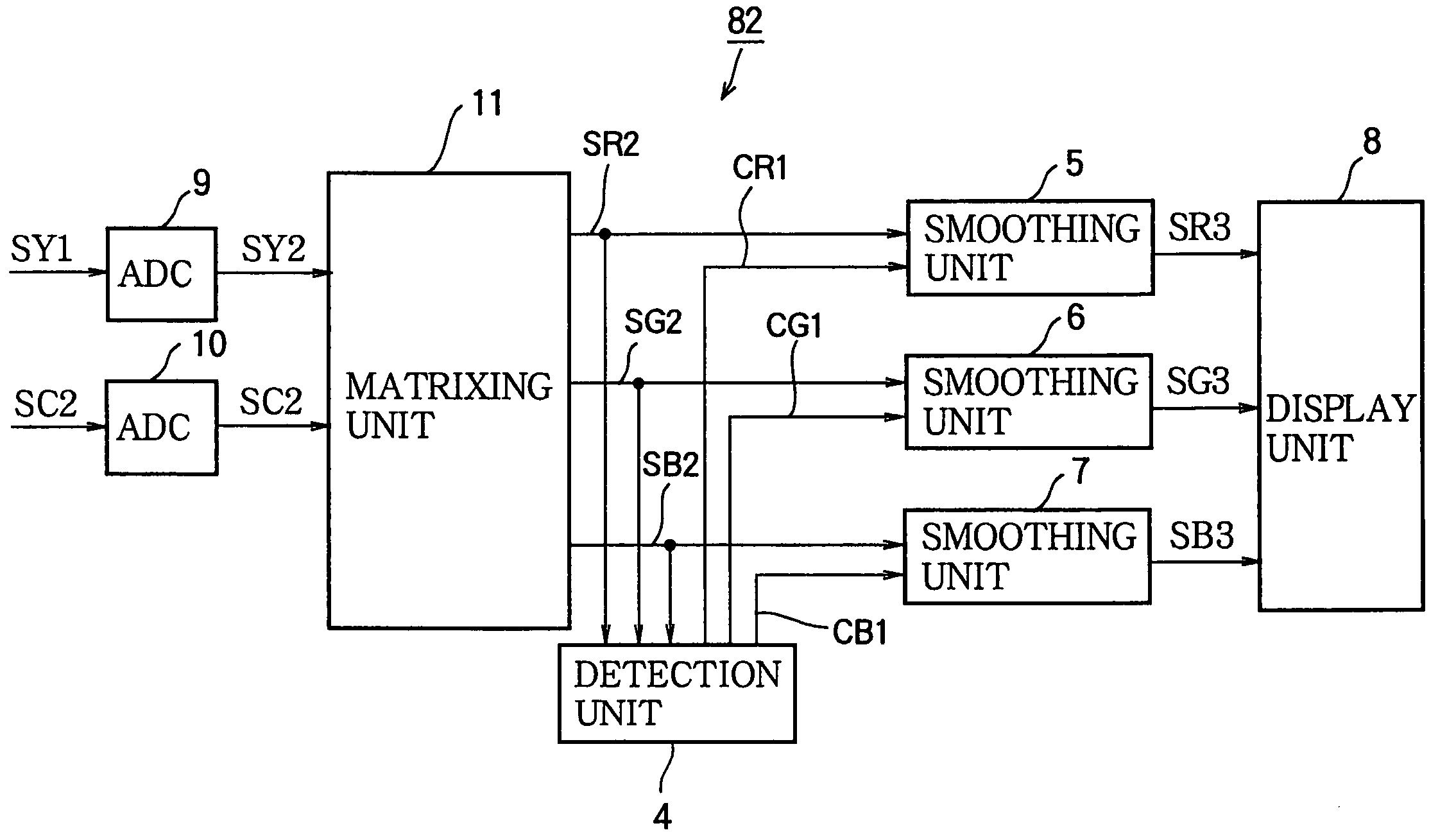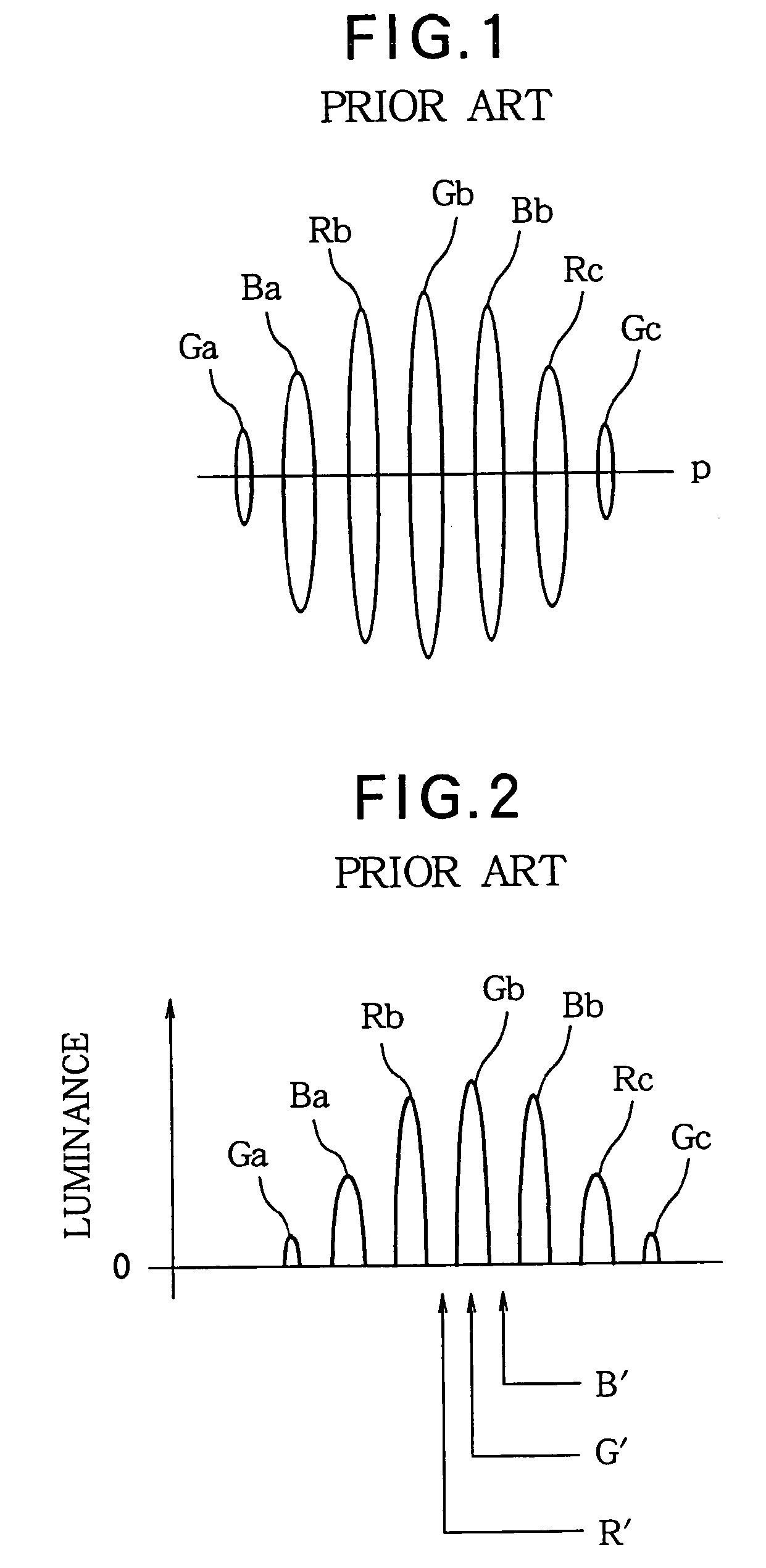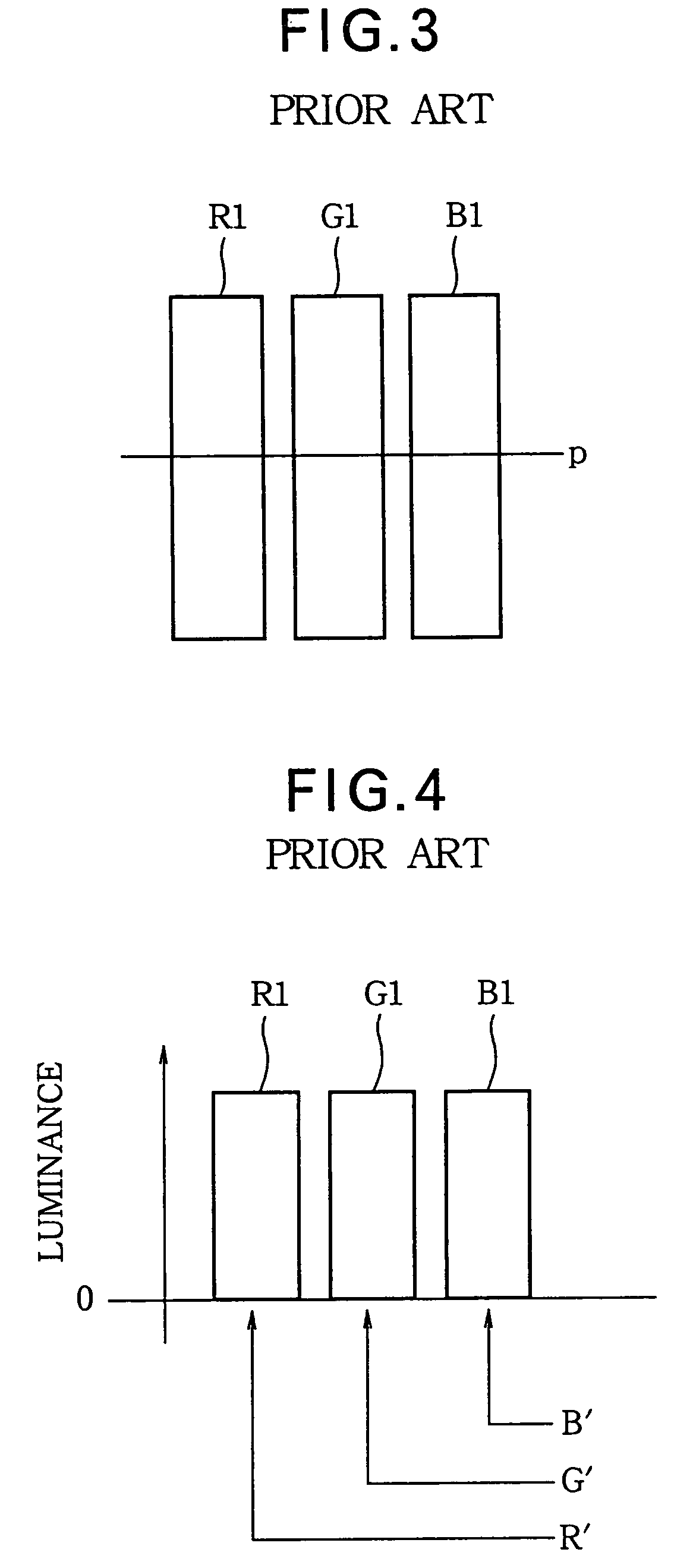Image display device employing selective or asymmetrical smoothing
a display device and selective or asymmetrical technology, applied in static indicating devices, cathode-ray tube indicators, instruments, etc., can solve the problems of difficult to fabricate a display screen with extremely small pixels, lines may become too faint to be easily seen, and letters may become difficult to read, so as to improve the visibility of dark lines
- Summary
- Abstract
- Description
- Claims
- Application Information
AI Technical Summary
Benefits of technology
Problems solved by technology
Method used
Image
Examples
first embodiment
[0089] Referring to FIG. 14, the invention is an image display device 81 comprising analog-to-digital converters (ADCs) 1, 2, 3, a detection unit 4, smoothing units 5, 6, 7, and a display unit 8. The analog-to-digital converters 1, 2, 3 convert analog input signals SR1, SG1, SB1 to digital signals SR2, SG2, SB2 representing red, green, and blue image data, respectively. The detection unit 4 receives these digital signals SR2, SG2, SB2 and generates corresponding control signals CR1, CG1, CB1. The smoothing units 5, 6, 7 filter the digital signals SR2, SG2, SB2 according to the control signals CR1, CG1, CB1. Each smoothing unit comprises, for example, a plurality of internal filters with different filtering characteristics, and a switch that selects one of the internal filters according to the corresponding control signal. The display unit 8 displays the resulting filtered signals SR3, SG3, SB3.
[0090] As a variation of the first embodiment, FIG. 15 shows an image display device 82 th...
second embodiment
[0133] As a variation of the second embodiment, FIG. 29 shows an image display device 86 that receives an analog luminance signal SY1 and an analog chrominance signal SC1 instead of analog red-green-blue input signals. This image display device 86 is similar to the image display device 82 in FIG. 15, except that the detection unit 4 is replaced by a detection unit 14 that receives the digitized luminance signal SY2 directly from analog-to-digital converter 9. This detection unit 14 is identical to the detection unit 14 in the image display device 85. The analog-to-digital converters 9, 10, matrixing unit 11, and smoothing units 5, 6, 7 are similar to the corresponding elements in FIGS. 15 and 28, so further description will be omitted.
[0134] As another variation of the second embodiment, FIG. 30 shows an image display device 87 that receives an analog composite signal SP1. This image display device 87 is similar to the image display device 83 in FIG. 16, except that the detection un...
third embodiment
[0158] By operating as described above, the third embodiment is able to execute smoothing processing only on image data representing bright parts of the image that are adjacent to edges in the image.
PUM
 Login to View More
Login to View More Abstract
Description
Claims
Application Information
 Login to View More
Login to View More - R&D
- Intellectual Property
- Life Sciences
- Materials
- Tech Scout
- Unparalleled Data Quality
- Higher Quality Content
- 60% Fewer Hallucinations
Browse by: Latest US Patents, China's latest patents, Technical Efficacy Thesaurus, Application Domain, Technology Topic, Popular Technical Reports.
© 2025 PatSnap. All rights reserved.Legal|Privacy policy|Modern Slavery Act Transparency Statement|Sitemap|About US| Contact US: help@patsnap.com



